Autism's Effects On The Brain

Understanding how autism shapes brain development and structure
Autism Spectrum Disorder (ASD) is a neurodevelopmental condition characterized by core differences in how the brain develops, functions, and connects. These differences influence social communication, behavior, and sensory processing. Recent neurobiological research reveals profound structural, molecular, and connectivity alterations in autistic brains, beginning early in development and evolving across the lifespan. This article explores the neuroanatomical, genetic, and functional changes associated with autism, emphasizing how these brain differences underpin behavioral traits and inform diagnosis and intervention.
Widespread Brain Structural Changes in Autism
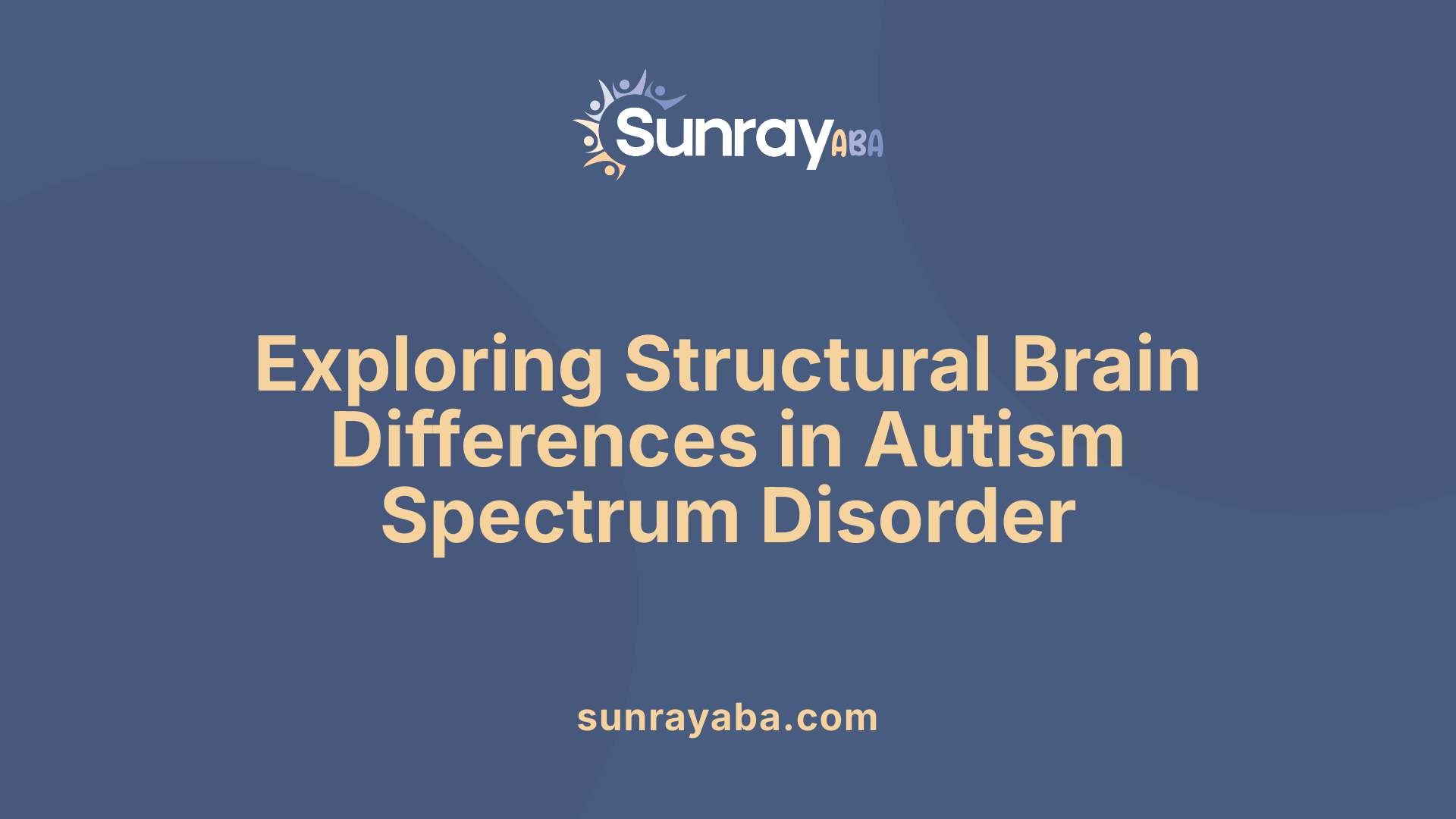
What does neuroimaging reveal about characteristic brain differences in autism?
Neuroimaging studies have significantly advanced our understanding of how autism spectrum disorder (ASD) affects brain structure. These scans uncover patterns of early overgrowth in certain regions, such as the frontal and temporal lobes, often occurring in the first two years of life. This rapid growth, known as early brain overgrowth, is most prominent in areas responsible for higher-order cognitive functions, social processing, and language.
Structural magnetic resonance imaging (MRI) has identified differences in various brain regions. For instance, the amygdala and hippocampus— crucial for emotion regulation and memory— show size variations: the amygdala can be smaller or enlarged depending on the development stage, while the hippocampus tends to be larger in children with autism. The corpus callosum, which connects the two brain hemispheres, is often larger in autistic individuals, potentially influencing how different parts of the brain communicate.
Other structural features include increased cortical folding or gyrification in regions like the superior temporal gyrus, and abnormal cortical thickness, which might relate to difficulties in social interaction and communication. Additionally, white matter integrity—the network of neuron fibers connecting different brain regions—is frequently compromised. These white matter abnormalities are linked to disruptions in neural pathways, affecting overall brain connectivity.
A notable characteristic is the variability in brain morphology across individuals with ASD. Some may present larger total brain volumes, while others may have more localized changes such as regional hypertrophy or atrophy. This diversity underscores the complexity of autism and suggests that multiple structural neuroanatomical subtypes exist within the spectrum.
Overall, neuroimaging has revealed that autism involves widespread and region-specific brain differences, from early overgrowth to later structural variability. These findings help clarify how brain architecture may underpin the diverse behavioral and cognitive features seen in autism.
| Brain Region | Typical Change in ASD | Possible Implication | Source of Observation |
|---|---|---|---|
| Frontal lobe | Early overgrowth, increased volume | Social and executive function issues | MRI studies |
| Temporal lobe | Altered gyrification, size variation | Language and social cognition implications | MRI studies |
| Amygdala | Enlargement or reduction, variable | Emotional regulation and anxiety | MRI studies |
| Hippocampus | Larger size in children | Memory processing challenges | MRI studies |
| Corpus callosum | Larger in some individuals | Interhemispheric communication | MRI studies |
| Cortex | Variations in thickness, increased folding | Cognitive and sensory processing | MRI studies |
| White matter | Reduced integrity in pathways | Connectivity difficulties | Diffusion tensor imaging (DTI) |
Understanding these structural differences offers a foundation for refining diagnostic criteria and developing targeted interventions tailored to distinct neuroanatomical profiles within autism.
Genetic and Molecular Foundations of Brain Variations
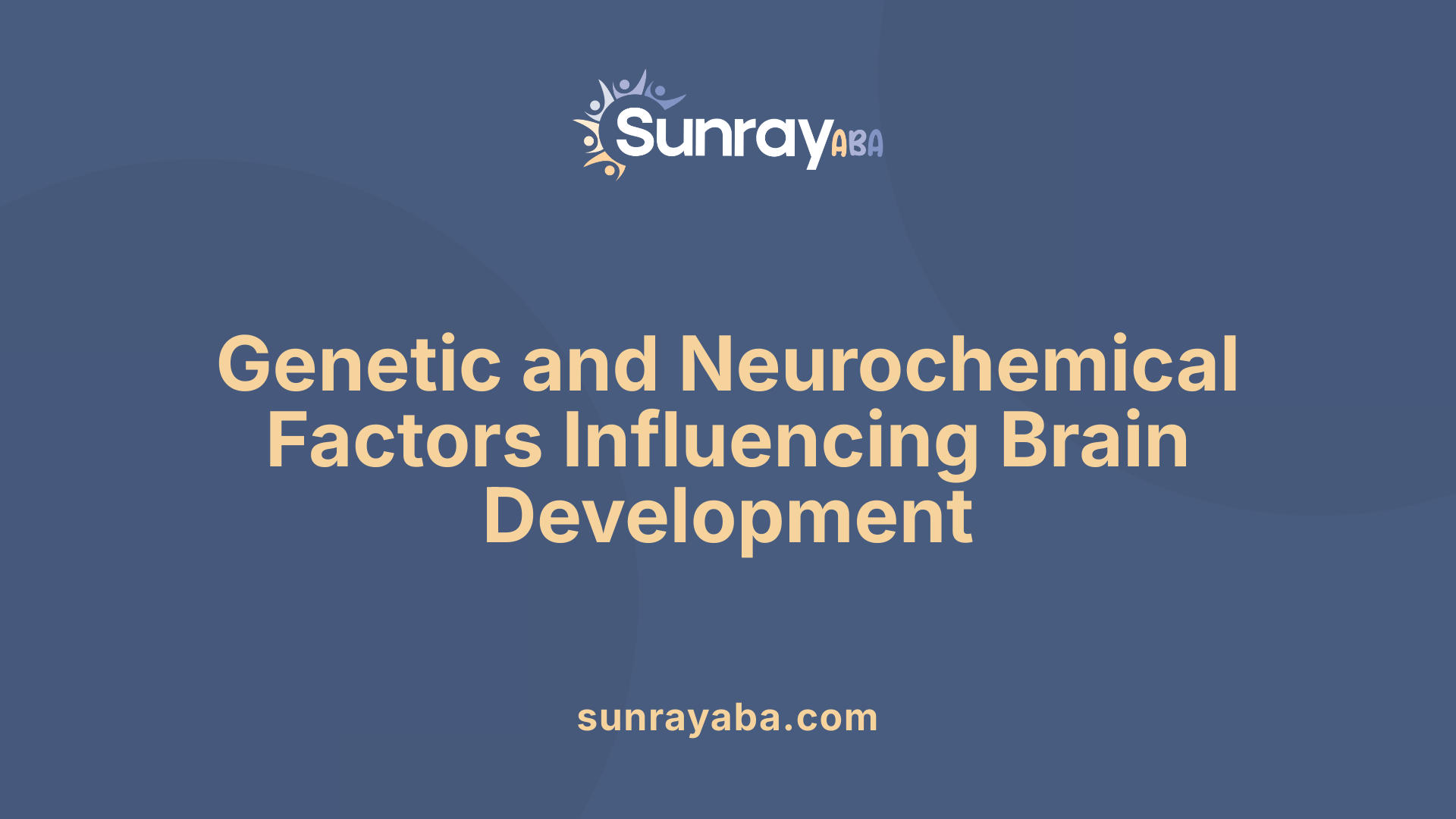
How do genetic and neurochemical factors influence brain changes in autism?
Genetic influences play a significant role in shaping the brain architecture associated with autism spectrum disorder (ASD). Research has identified over a thousand gene variations linked to autism, many of which are involved in synaptic development, connectivity, and neuron function. For instance, mutations in genes such as SHANK3, SCN2A, and PTEN can impair how neurons connect and communicate, leading to disrupted neural circuits.
These genetic variations often result in abnormal synaptic structures—either increasing or decreasing synaptic density—and can interfere with synaptic plasticity, the brain’s ability to adapt and reorganize itself. Such disruptions are crucial since synapses are the communication points between neurons, and their imbalance can underpin core autism features like social difficulties and repetitive behaviors.
Neurochemical factors also significantly influence brain development in autism. Imbalances in neurotransmitters such as GABA, glutamate, serotonin, and dopamine can affect excitation and inhibition balance within neural circuits. For example, decreased GABA synthesis in aging individuals with autism impairs inhibitory signaling, which may contribute to hyperactivity or sensory sensitivities observed in autism.
Moreover, disturbances in neurochemical pathways often intersect with genetic factors. Alterations in signaling pathways like mTOR, which regulates cell growth and synaptic formation, are frequently linked to autism-related gene mutations. Overactivity of mTOR has been observed in autistic brains, leading to reduced autophagy and impaired synaptic pruning—processes vital for healthy brain development.
Age-related gene expression changes further influence these neurobiological processes. As individuals age, genes involved in immunity, inflammation, and synaptic functions show different levels of activity. For example, in autistic brains, immune and inflammation-related genes tend to be upregulated, possibly aggravating neuroinflammation and neurodegeneration over time.
Overall, the complex interplay between genetic mutations, neurochemical imbalances, and age-dependent gene expression modifications drives the structural and functional brain differences seen in autism.
| Aspect of Influence | Specific Factors | Impact on Brain Development |
|---|---|---|
| Genetics | Mutations in SHANK3, PTEN, SCN2A; gene variations affecting synaptic proteins | Altered synapse formation and connectivity, disrupted neural circuits |
| Neurochemistry | GABA, serotonin, glutamate, dopamine imbalances | Excitatory-inhibitory imbalance, sensory sensitivities |
| Age-related gene expression | Changes in immunity, inflammation, synaptic genes | Neuroinflammation, potential neurodegeneration, altered plasticity |
Understanding these molecular foundations provides insight into the biological basis of autism and underpins ongoing efforts to develop targeted interventions.
Neuroanatomical Regions Implicated in Autism

What brain regions are involved in autism and what are their functions?
Autism spectrum disorder (ASD) affects multiple brain regions that are critical for social cognition, memory, movement, and overall neurological functioning. Among these, the amygdala, hippocampus, cerebellum, prefrontal cortex, and corpus callosum are particularly notable.
The amygdala and insula are central to processing emotions and social signals. In individuals with ASD, these regions often show enlargement or structural differences, which are thought to contribute to difficulties with social interactions and emotional understanding.
The hippocampus plays a vital role in memory formation and learning. Studies indicate that in ASD, the hippocampus may be enlarged during early development but can also exhibit altered activity, influencing memory and spatial navigation.
The cerebellum, traditionally associated with movement coordination, also participates in cognitive processes. Researchers have noted that the cerebellum tends to be smaller and less active in those with autism, which could relate to both motor coordination issues and higher-order cognitive challenges.
Structural alterations like increased cortical folding in certain regions and reductions in others are observed. These changes influence how brain networks communicate, often leading to atypical connectivity patterns.
Functionally, these structural differences translate into behavioral manifestations such as social deficits, repetitive behaviors, sensitivities to sensory stimuli, and challenges with communication.
Understanding these brain region alterations helps clarify the neurobiological underpinnings of ASD and guides targeted research and potential interventions.
| Brain Region | Typical Function | Alterations in Autism | Functional Implications |
|---|---|---|---|
| Amygdala | Emotional and social processing | Enlargement or differences; related to social deficits | Difficulties interpreting social cues; heightened anxiety |
| Hippocampus | Memory and learning | Enlarged early in development; altered activity | Memory formation issues; learning challenges |
| Cerebellum | Movement coordination and cognition | Smaller size and less activity in ASD | Motor skill challenges; cognitive processing issues |
| Prefrontal Cortex | Executive functions, reasoning | Differences in structure and connectivity | Impaired decision-making and social behavior |
| Corpus Callosum | Connectivity between hemispheres | Larger size observed in some studies | Variability in information transfer across the brain |
This comprehensive view of brain regions underscores the complex neural architecture involved in autism, revealing how alterations at the structural and functional levels contribute to the diverse symptoms observed in ASD and aiding in developing more precise diagnosis and treatments.
Neurodevelopmental Patterns Across the Lifespan
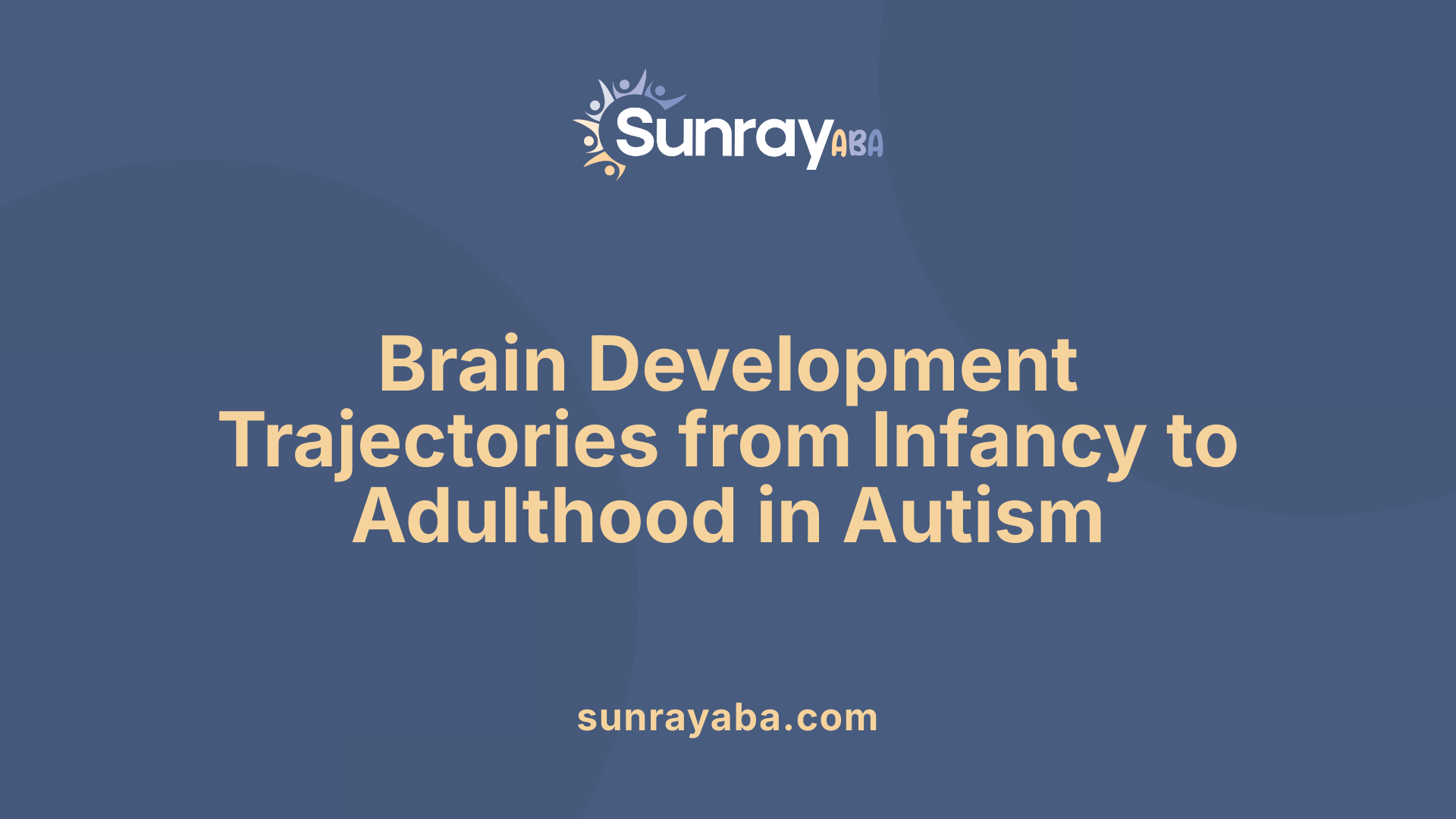
Early brain overgrowth in infancy
Research indicates that infants who are later diagnosed with autism often experience rapid brain growth within the first year of life. This period shows an atypical expansion of the cortex, especially in regions responsible for higher cognitive functions, such as the frontal and temporal lobes. Notably, the cortex may expand significantly between 6 to 12 months, a critical window where neural circuits form and synaptic pruning begins.
Additional studies highlight overgrowth in the hippocampus and amygdala, structures involved in memory and emotional regulation. This early hyperdevelopment can lead to abnormal connectivity patterns that affect social and sensory processing.
Slowed or arrested growth during childhood
Following this early burst of growth, brain development in children with autism often slows or halts altogether. Many children experience a plateau or even a decline in brain volume during later childhood. Some regions, such as the cerebellum, exhibit reduced size and activity, which correlates with motor and cognitive challenges.
Cortical thickness also varies across different areas, sometimes increasing in certain regions, which may underpin the persistence of repetitive behaviors and social difficulties. White matter abnormalities, especially in fibers linking key brain areas, can further impair neural communication.
Degeneration and decline in adulthood
Evidence suggests that in some individuals with autism, especially as they age, there is a premature decline in brain volume and neuronal integrity. Studies show a reduction in synaptic density and signs of neurodegeneration in certain brain areas during adulthood. The patterns resemble neurodegenerative processes seen in conditions like Alzheimer’s disease, including increased neuroinflammation and disrupted neural circuits.
This developmental trajectory underscores the importance of early detection and intervention, as the brain’s rapid growth phase followed by possible decline may influence long-term outcomes.
When does the autistic brain stop developing?
Autistic brain development begins prenatally, with significant overgrowth occurring during infancy and toddler years, especially in the frontal, temporal, and limbic regions. After this initial overgrowth, typically during childhood, brain growth rate slows or becomes arrested, with some regions showing cortical thinning and decreased volume. In adolescence and adulthood, evidence suggests the brain can undergo accelerated decline, with reductions in volume and neuronal integrity, reflecting neurodegeneration or structural deterioration. Overall, autism entails a dynamic neurodevelopmental trajectory marked by early excessive growth, followed by stabilization and later decline.
Neurobiological Mechanisms and Synaptic Abnormalities
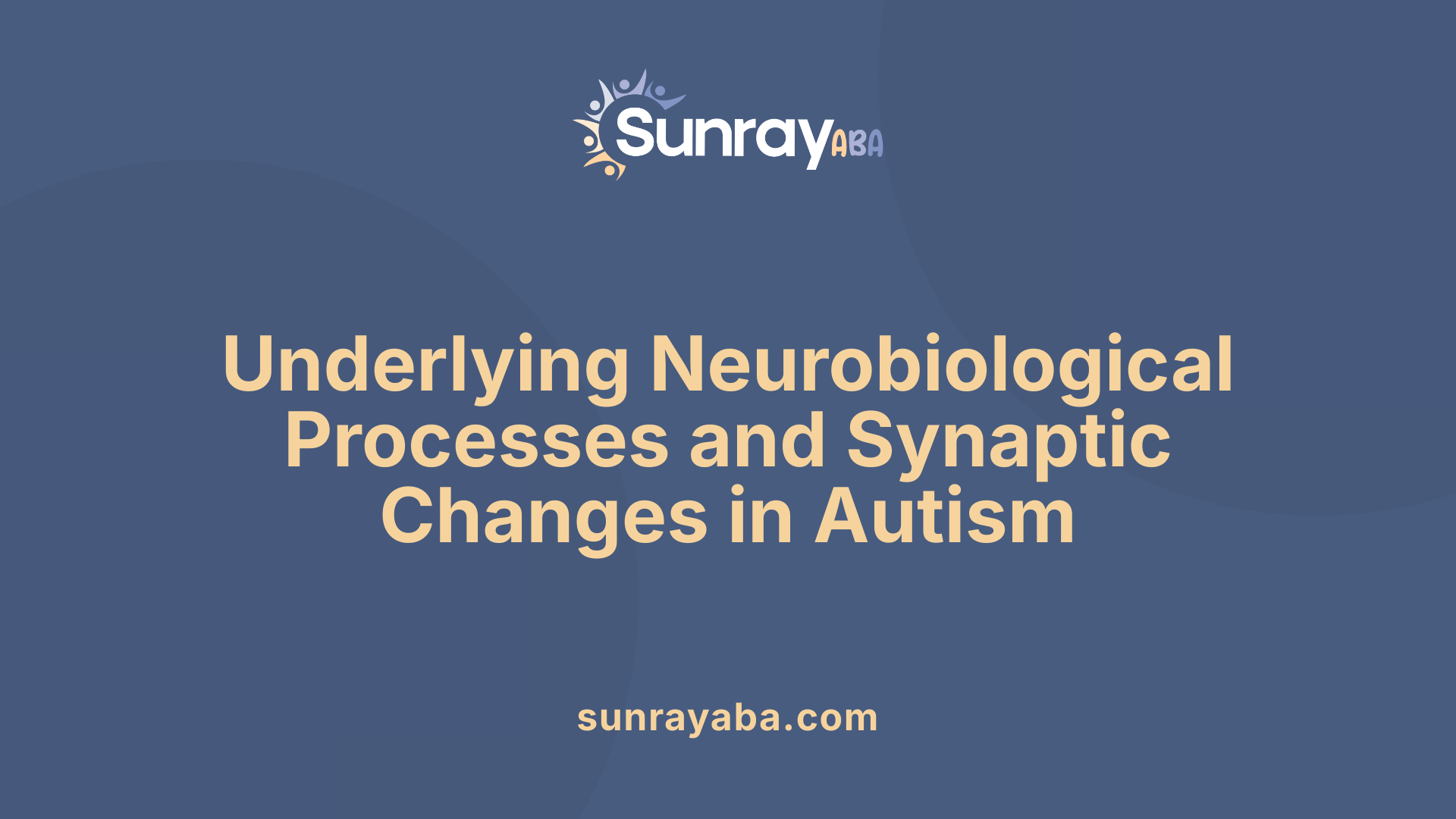
What are the neurobiological mechanisms underlying autism?
Autism spectrum disorder stems from intricate neurobiological processes that involve both genetic and molecular factors. Research shows that mutations in genes responsible for synaptic proteins, such as SHANK3, SCN2A, and PTEN, lead to disruptions in how neurons connect and communicate. These mutations can cause an increase in the number of synapses or impair the normal pruning process that occurs during brain development.
A crucial pathway involved in autism is the mTOR signaling pathway. When overactivated, mTOR impairs autophagy, the cell’s process of degrading damaged parts and maintaining cellular health. Reduced autophagy results in an excess of synapses that are improperly formed or maintained, leading to poor synaptic pruning. This excess synaptic formation disturbs the balance and efficiency of neural circuits.
The disrupted neural circuitry manifests as altered brain connectivity patterns. There is evidence of reduced long-range connectivity which hampers communication between distant brain regions, as well as increased local connectivity that may cause hyper-focused or repetitive behaviors. These anomalies affect how signals are transmitted, processed, and integrated, ultimately impacting social interactions, communication skills, learning, and sensory processing.
In essence, the neurobiological foundation of autism involves a constellation of genetic mutations affecting synaptic structure and function, overactivity of growth-related pathways like mTOR, and consequent aberrant circuit connectivity. Understanding these mechanisms helps pave the way for targeted treatments aiming to correct or mitigate the synaptic and circuit abnormalities characteristic of autism.
Connectivity Patterns and Functional Brain Networks
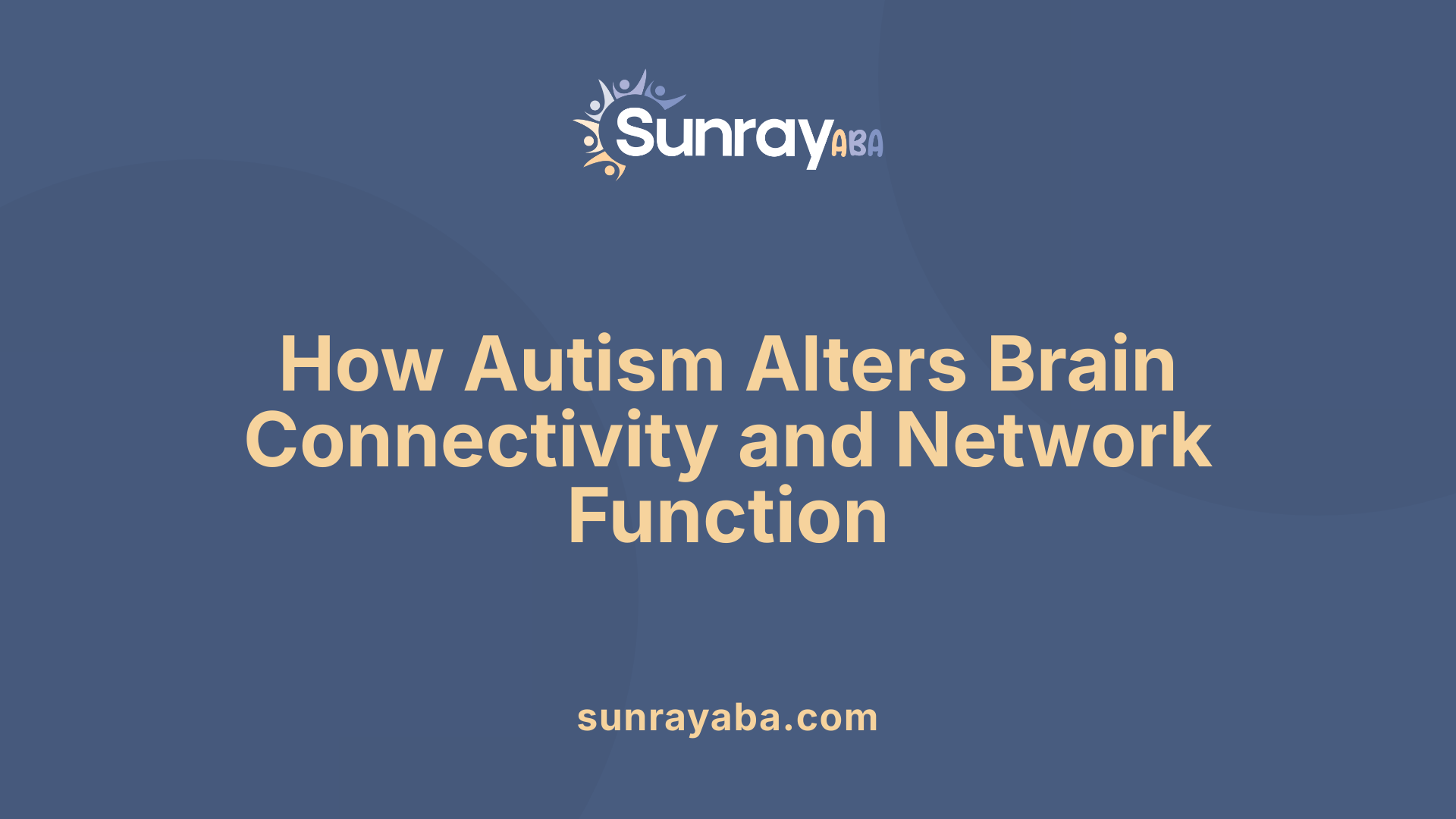
How does autism affect the brain and nervous system?
Autism influences the brain through widespread connectivity changes that alter how different regions communicate and work together. Research indicates that individuals with autism often experience reduced long-range cortical connections, meaning that signals between distant brain areas are less efficiently transmitted. Conversely, there tends to be increased connectivity within local neural circuits, which can lead to heightened activity in small regions but less coordination across larger networks.
Functional brain networks, especially those involved in self-referential thinking and social cognition, show atypical activity patterns in autism. The default mode network (DMN), a critical network active during rest and introspection, often displays decreased connectivity or abnormal activation. Such differences may impair processes like understanding others’ perspectives or engaging in social interactions.
Hemispheric processing also shows asymmetries in autistic brains. There is a tendency towards greater left-hemisphere dominance for detailed, rule-based processing. Some studies note subtle reductions in overall brain symmetry, but these differences are generally too subtle for reliable diagnosis through brain imaging alone. The irregular connectivity patterns contribute to the unique cognitive and behavioral features characteristic of autism, affecting how sensory information, emotions, and thoughts are integrated across the brain.
| Aspect | Typical Brain Connectivity | Autism-Related Changes | Impact |
|---|---|---|---|
| Long-range connections | Efficient communication across distant regions | Reduced connectivity, impacting integrative functions | Impaired social and cognitive processing |
| Local circuits | Specialized processing within small areas | Increased local connectivity, possibly causing sensory overload | Heightened focus or repetitive behaviors |
| Default mode network | Active during rest, involved in introspection and imagination | Lower or abnormal activation | Difficulties with social understanding |
| Hemispheric symmetry | Generally balanced structure and function | Slight differences, often more left hemisphere processing | Subtle variations in language and detail-oriented tasks |
Understanding these connectivity patterns helps explain many of the core features of autism, such as social challenges, intense focus on specific interests, and sensory sensitivities. Advanced neuroimaging techniques like MRI and PET scans continue to shed light on these complex brain network differences, paving the way for targeted interventions.
Sensory Processing and Sensory Integration Differences
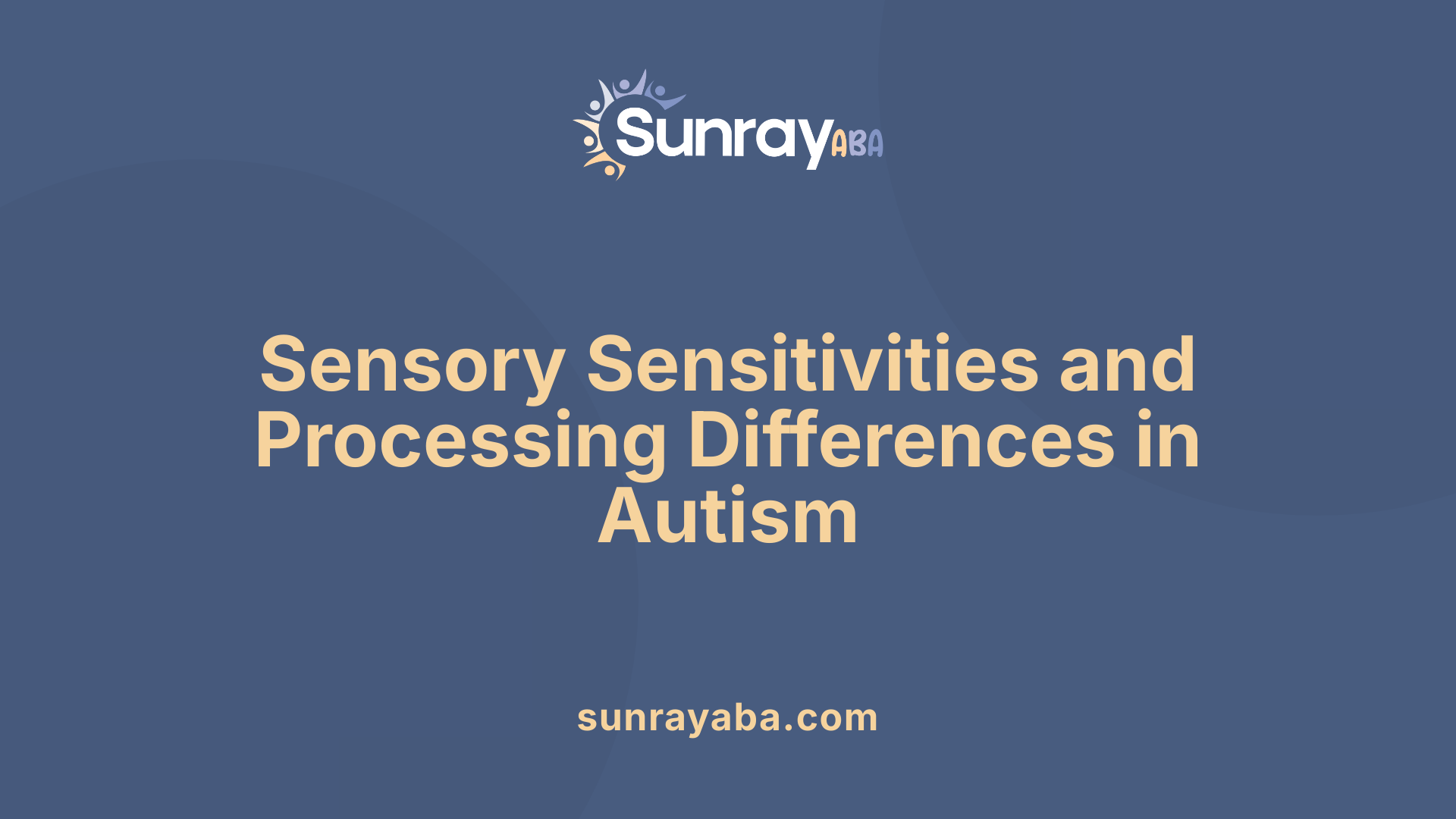
Do people with autism feel overwhelmed?
Many individuals on the autism spectrum experience sensory hypersensitivity, which means they are more sensitive to sensory stimuli such as light, sound, touch, or movement. This heightened sensitivity can cause them to feel overwhelmed more quickly than neurotypical individuals.
Research shows that autistic brains often exhibit increased activity in sensory cortex regions, like the visual cortex and parietal cortex. These areas are responsible for processing visual information and spatial awareness. The large changes in RNA levels in these regions suggest that the sensory processing systems are distinctly different at the molecular level, contributing to atypical sensory experiences.
Because sensory processing is altered, everyday stimuli may be perceived as intense or even painful. This can lead to sensory overload, where the brain struggles to filter and integrate all incoming sensory information efficiently.
Alterations in sensory cortex activity
In autism, the usual balance of neural activity in sensory regions is disrupted. Studies note that sensory cortex regions show more random activity patterns, particularly in severe cases. This irregular activity hampers the brain's ability to organize sensory input coherently.
For example, the auditory centers might respond to voices similarly in autistic and neurotypical children, but the way these signals reach social and emotional processing centers differs significantly. Over-connected pathways between auditory regions and social perception areas generate an abnormal response to sounds, especially emotional tones like sadness.
This altered activity impacts perception, making it harder for autistic individuals to interpret social cues properly or to filter out background noise. The brain's reduced long-range connectivity and increased short-range connections further contribute to fragmented or overwhelming sensory experiences.
Impact on perception and behavior
These neurological differences influence how autistic people perceive their environment and react to stimuli. Increased sensitivity can lead to behaviors such as covering ears, avoiding busy places, or meltdowns when overwhelmed. These reactions are coping mechanisms to deal with sensory overload.
Children with autism often struggle to identify emotional tones in voices, especially sad ones, due to abnormal connectivity in the social brain regions like the temporoparietal junction. The over-connected auditory pathways may hinder the accurate decoding of emotional cues.
The combination of sensory hypersensitivity and altered brain activity can significantly affect daily functioning, social interactions, and emotional regulation. Recognizing these sensory differences is crucial for creating supportive environments and interventions tailored to individual sensory needs.
| Aspect | Description | Consequences |
|---|---|---|
| Sensory hypersensitivity | Increased RNA changes in sensory cortex | Overwhelm and discomfort with sensory stimuli |
| Cortical activity | Random and over-connected activity patterns | Difficulties in filtering sensory input |
| Behavioral reactions | Meltdowns, shutdowns, avoidance | Challenges in social and emotional regulation |
Understanding these sensory processing differences helps inform better support strategies, focusing on reducing overwhelm and improving sensory integration for individuals with autism.
Implications for Diagnosis, Support, and Future Research
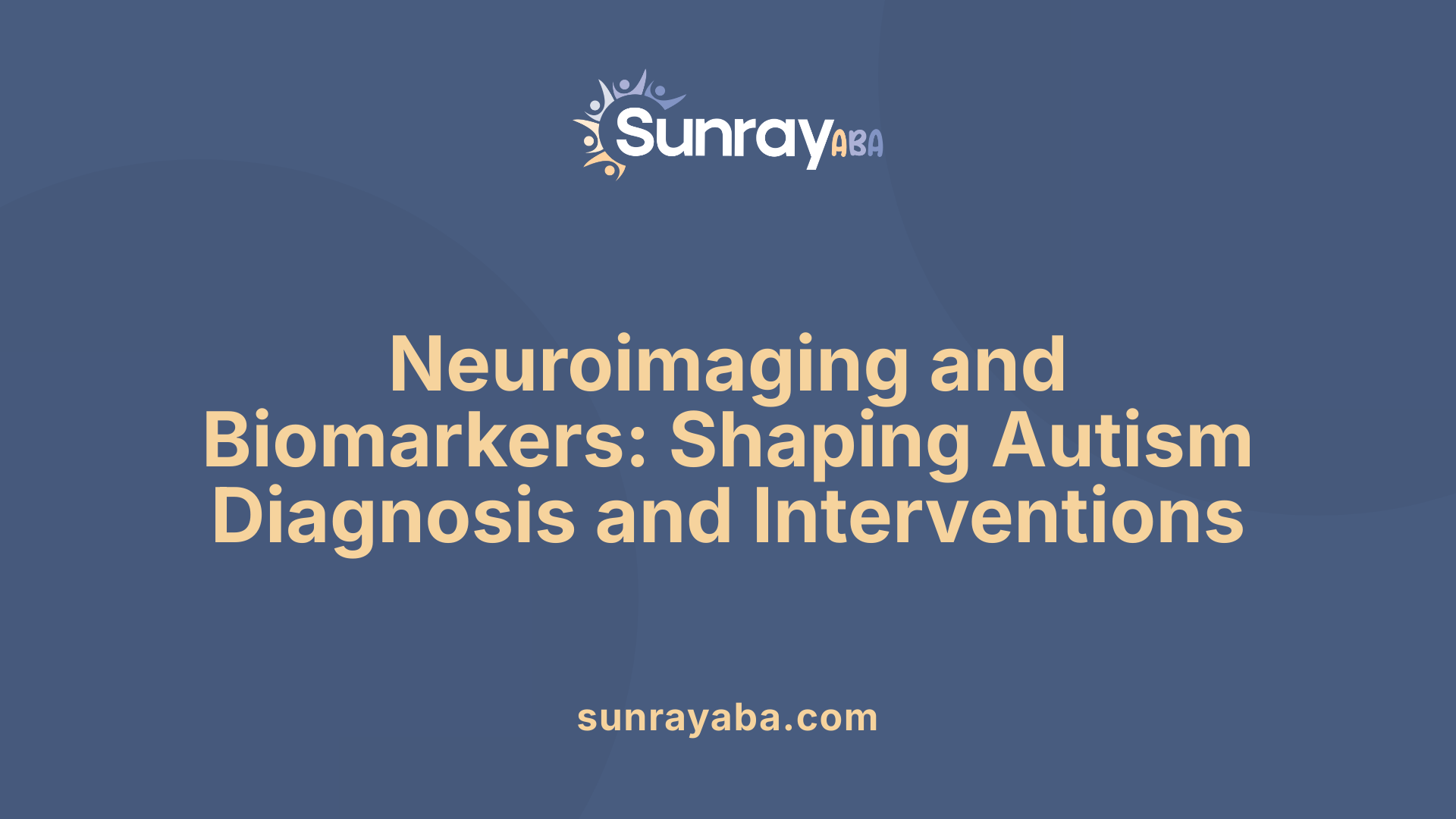
What are the overall neurological changes associated with autism throughout development and into later life?
Autism is characterized by a distinct pattern of brain development that occurs early in life. In infants and young children, there is often an initial phase of accelerated brain growth, particularly in regions like the frontal and temporal lobes, which are crucial for higher cognitive functions, social behavior, and language. This early overgrowth may be linked to an excess of neurons or disrupted neuronal migration, leading to increased brain volume and connectivity.
As children with autism grow into adolescence, this rapid growth tends to slow or arrest, resulting in structural thinning and a normalization or reduction in brain volume in some regions. Studies have observed decreases in gray matter and white matter, which may influence behavioral and cognitive features associated with autism.
In later adulthood, neurodegenerative processes can take place. Some individuals with autism exhibit signs of brain aging earlier than neurotypical peers, including neuronal loss and decreased brain volume, especially in regions involved in memory and executive functions. These age-related changes may be accompanied by worsening of cognitive abilities and more pronounced behavioral challenges.
This ongoing developmental trajectory underscores that autism is not only a developmental condition but a lifelong neurobiological profile. It involves intricate molecular and cellular alterations, including changes in synaptic density, neural connectivity, and gene expression. Recognizing these patterns is critical for early diagnosis, which can leverage neuroimaging and molecular biomarkers to identify at-risk individuals.
Current research suggests that targeted interventions, including neurostimulation and behavioral therapies, may modify neural pathways and improve outcomes across the lifespan. Understanding the neurodevelopmental progression of autism emphasizes the importance of supporting individuals with tailored approaches throughout their lives, addressing both early overgrowth and later neurodegenerative aspects.
Understanding the Spectrum: Variability and Individual Differences
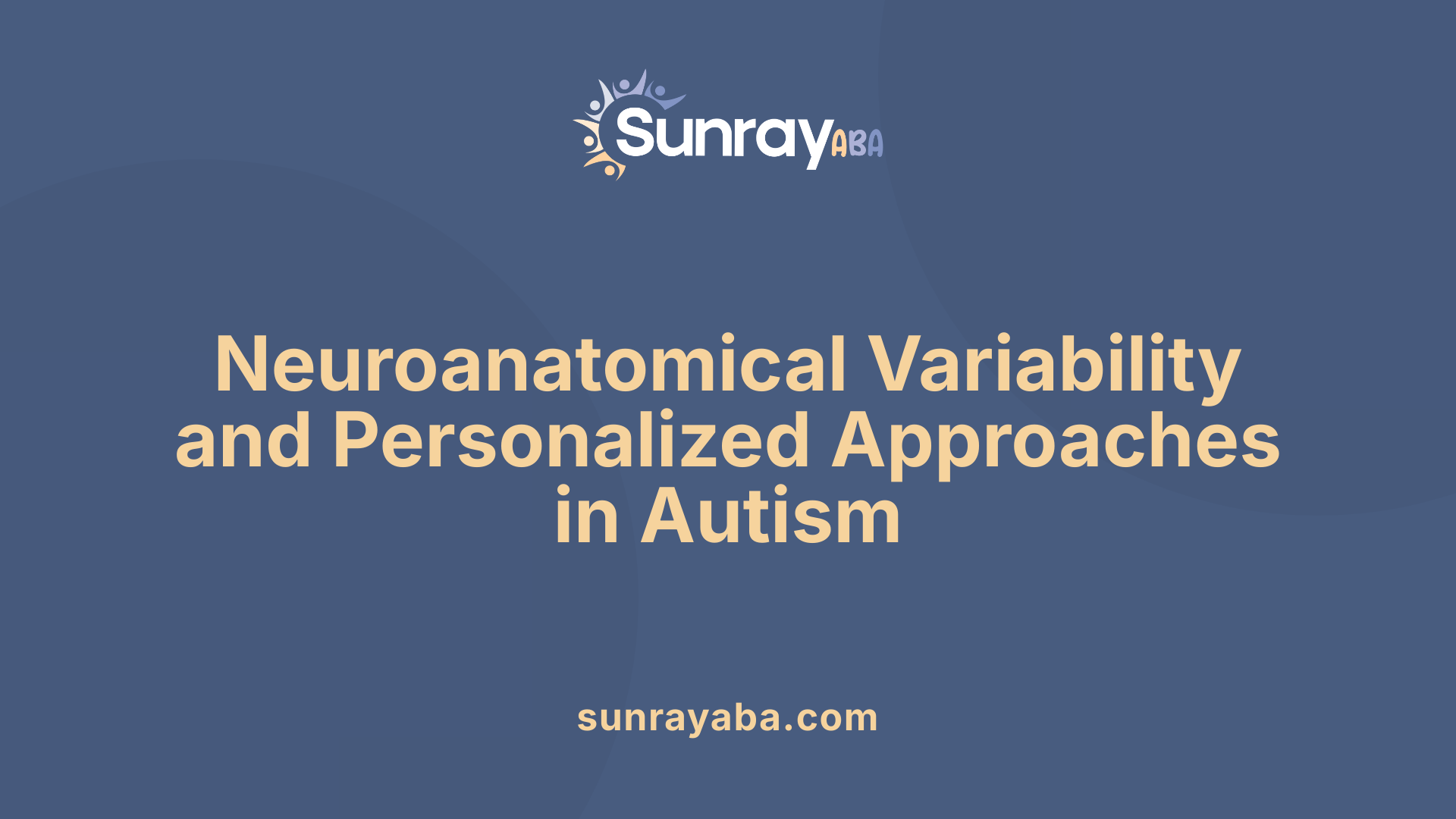
Heterogeneity in brain structure and function
Autism spectrum disorder (ASD) presents a wide range of brain differences among individuals. Studies show that while some people exhibit enlarged brain regions early in childhood—such as the frontal, temporal, and limbic areas—others may have smaller or structurally different brain parts. Variability extends to features like the size of the amygdala and hippocampus, and the integrity of white matter tracts connecting various brain regions.
Structural differences are often region-specific, with some individuals showing increased cortical thickness and folding, especially in the left parietal and temporal lobes, while others display reduced tissue volumes. Functional activities also vary, with some showing hypoactivity in social and emotional processing areas like the amygdala and anterior cingulate cortex, and others revealing overactivity or atypical patterns of connectivity.
This heterogeneity makes autism a complex condition, where no single brain structure or pattern can define all cases. The diversity in brain features correlates with the wide spectrum of behavioral symptoms, including social communication challenges, repetitive behaviors, and sensory sensitivities.
Biological subtypes and personalized approaches
Recognizing this variability has led researchers to explore biological subtypes within autism. Efforts focus on identifying patterns of brain growth, connectivity, and gene expression profiles that could classify individuals into more precise categories. For example, some subtypes may be characterized by early brain overgrowth combined with immune or inflammation-related gene expression, while others show typical or reduced growth but distinct connectivity anomalies.
Understanding these subtypes opens the door for personalized treatment strategies. Tailored interventions could target specific neural circuits, such as enhancing connectivity in underconnected networks or modulating overactive regions. Advances in neuroimaging and genetic testing are paving the way for early identification and more individualized approaches to support development.
Challenges in diagnosis
Despite progress, diagnosing autism based solely on brain structure remains challenging due to the high individual variability. Brain imaging studies reveal subtle differences—like hemisphere symmetry or size variations—that are too inconsistent to be used as standalone diagnostic tools. Moreover, behavioral assessments currently remain the gold standard.
The subtle and diverse nature of brain differences means that clinicians must combine behavioral observations with neuroimaging and genetic insights. Efforts continue to improve early detection through identifying reliable biomarkers and understanding how individual brain variations relate to observable symptoms.
| Aspect | Variability Observed | Implications |
|---|---|---|
| Structural differences | Brain region size, cortical folding, tissue volume variations | No single structure defines autism; personalized assessment needed |
| Functional activity | Divergent activity patterns in social/emotional areas | Targeted therapies may address specific network dysfunctions |
| Connection patterns | Both hypo- and hyperconnectivity across networks | Complexity challenges diagnosis and treatment planning |
| Genetic profiles | Multiple gene variations related to brain development | Supports personalized medicine approaches |
Understanding the individual differences in brain structure and function underscores the importance of personalized approaches to autism. These insights help refine diagnostic processes and open new pathways for tailored interventions.
Advancing the Neurobiological Understanding of Autism
Research into the neurobiological underpinnings of autism continues to unveil the intricate and multifaceted alterations in brain structure, connectivity, and molecular pathways. These insights highlight the diversity of neural development in ASD and reinforce the importance of early diagnosis and personalized interventions. By integrating neuroimaging, genetics, and neurochemistry, scientists are forging new pathways toward understanding and supporting individuals with autism across their lifespan, ultimately fostering greater awareness and tailored support strategies.
References
- Brain changes in autism are far more sweeping than ...
- Autism Spectrum Disorder: Autistic Brains vs Non- ...
- Brain structure changes in autism, explained
- Characteristics of Brains in Autism Spectrum Disorder
- Brain wiring explains why autism hinders grasp of vocal ...
- A Key Brain Difference Linked to Autism Is Found for the First ...
- Autism spectrum disorder - Symptoms and causes
- Brain development in autism: early overgrowth followed by ...
- Autism: Causes, Symptoms, & More